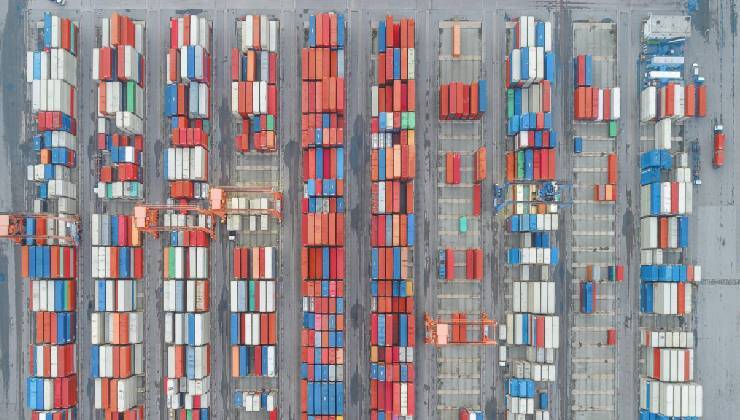The U.S. manufacturing sector continues to navigate choppy waters, with the latest data revealing...
U.S. House Passes Maritime Supply Chain Security Act to Strengthen Port Infrastructure and National Security

On June 10, 2025, the U.S. House of Representatives took a significant step toward securing the nation’s maritime supply chain by passing legislation introduced by Congressman David Rouzer. The Maritime Supply Chain Security Act aims to enhance port infrastructure while addressing critical vulnerabilities that threaten both economic stability and national security.
Addressing Security Risks in U.S. Ports
The new legislation clarifies how funds from the Port Infrastructure Development Program (PIDP) can be used; explicitly allowing them to replace port hardware, as recommended in a September 2024 report issued by a prominent House Committee. The report identified alarming security gaps due to U.S. ports’ reliance on Chinese-made equipment such as ship-to-shore cranes and container handling machinery.
The report warned that the U.S. maritime sector is “dangerously reliant” on equipment that is produced, manufactured, assembled, or installed in the People’s Republic of China (PRC), posing potential risks of espionage or sabotage.
Why Securing Maritime Infrastructure Matters
Representative Rouzer highlighted that port infrastructure is a foundational pillar of America’s supply chain, and that if compromised – whether due to technical failure or foreign interference – it can lead to far-reaching economic consequences. In a time when global logistics remain vulnerable to geopolitical tensions, the bill reflects a proactive approach to ensure U.S. ports are not only technologically advanced but also secure from external threats.
Looking Ahead
The passage of the Maritime Supply Chain Security Act marks a pivotal moment in fortifying the backbone of U.S. commerce and defense logistics. By targeting the replacement of vulnerable Chinese-made port infrastructure with secure, domestically sourced alternatives, the legislation aims to protect the nation’s supply chains from foreign interference and ensure resilience in times of global uncertainty.
As the bill moves forward, stakeholders in maritime transportation, logistics, and national security will be watching closely to see how this funding and policy shift impacts port operations and the broader supply chain landscape.
Implications for Supply Chain Stakeholders
For terminal operators, logistics providers, and import-export businesses, this legislation signals a coming wave of infrastructure updates that could introduce both short-term adjustments and long-term benefits. Upgrading hardware and systems will require coordination across federal, state, and private sectors – prompting potential delays or workflow changes in the interim. However, these investments also offer an opportunity to modernize aging port technologies, reduce cyber vulnerabilities, and build a more transparent and resilient flow of goods.
Equally important, they can drive enhanced digital collaboration across all nodes in the value chain. Solutions like Aquatio Software’s eBOL and Shipping Workflow are already supporting drayage operations by improving visibility and coordination – laying the groundwork for more connected, efficient, and secure supply chains.
Private companies involved in supply chain digitization and port operations should prepare for expanded collaboration with public agencies, as funding channels open for qualified modernization projects. The bill not only underscores national security priorities – it also puts a spotlight on the importance of technology innovation in future-proofing American logistics.
Now is the time for industry leaders to assess their digital readiness and explore partnerships that align with these infrastructure investments. Whether it’s modernizing port workflows or enhancing real-time visibility across drayage operations, the opportunity to lead – and shape – the next generation of resilient supply chains is here.


